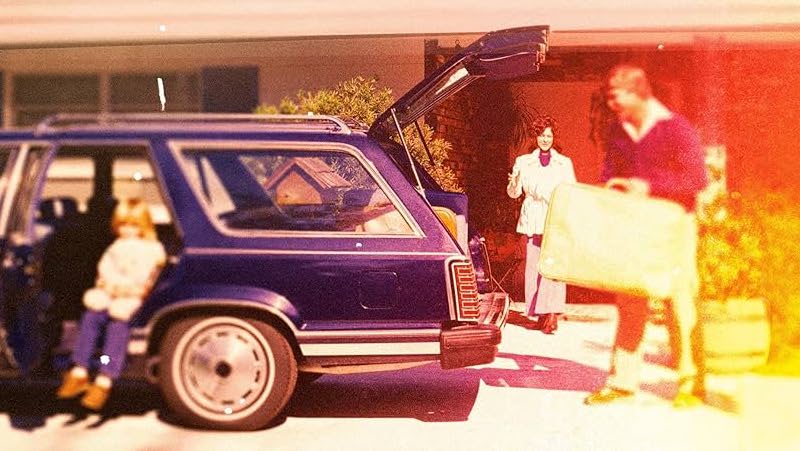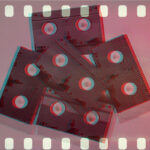When Farm-to-Table Fare Meets an Indie Bookstore
Bird in Hand Might Just Be the Most Baltimore Thing Ever
As proverbs go, “a bird in hand is worth two in the bush” seems particularly apt in Baltimore. It’s cautionary, but it’s underpinned by a notion of gratitude, and in a city that so mightily and publicly struggles with violence and poverty, there’s practically an ethical imperative to be grateful for what you’ve got. Yet, for all of the city’s well-known economic and social woes, in the two years I’ve lived here, I’ve noticed that many Baltimoreans love Baltimore in a way that, say, you’re average DC resident doesn’t love DC (particularly since the inauguration).
I won’t speculate as to why others enjoy living here (especially since this is well-worn ground: the city’s been written about and celebrated by people with far more Baltimore credibility than I’ve got), but for me, Baltimore’s appeal has everything to do with its affect and atmosphere. Put simply: Baltimore and Baltimoreans are generally unpretentious and they’re also pretty damned interesting, which are two adjectives I’d also use to describe Bird in Hand, the city’s new café and bookstore.
I mention all of this—Baltimore’s laidback affect, the endearing and enduring love people have for the place—because these things make Baltimore feel like a small town. This is a city in which it’s still big news when a new café-bookstore opens, but it’s especially big news when that café is the work of James Beard Award-winning chef Spike Gjerde and the bookstore is run by Ed and Anne Berlin, the proprietors of Baltimore’s beloved Ivy Bookshop.
To be clear, though, in speaking to both Gjerde and Berlin by phone last month, each stressed the importance of thinking of Bird in Hand not as an extension of an earlier venture, but as something wholly new. Their emphasis on Bird in Hand’s singularity is manifested by the space itself. Located between Baltimore’s two primary north-south arterials (Charles Street and St. Paul Street), Bird in Hand occupies an impressively sleek and light-filled space in Charles Village, a central Baltimore neighborhood that’s home to Johns Hopkins University and the Baltimore Museum of Art.
When I ask Gjerde about the design—which stands in stark contrast to the stone and heavy beams of his other restaurants and to the warm wood and Kilim rugs of The Ivy—he tells me, “There are really two things that define our space: lack of budget and salvaged materials.” He laughs at this, but it’s clear that while he’s only partially joking about the money, Gjerde is serious about the salvaging. “In the past, we’ve had a really cool old building to work with, and we’ve salvaged or reclaimed materials that we could repurpose. This time around, we had our customarily low budget, but the thing that was lacking was the old building. Instead, we had a new space to work with, but for the look and the feel of Bird in Hand, we wanted to maintain our process of repurposing salvaged materials. Sort of in the same way that we build a menu by looking around us to see what’s available and what’s unique, we looked around for interesting materials and we worked with a builder who loves using those materials and who’s great at it.”
Thankfully for Gjerde, who tends to speak in long, if not digressive sentences, it’s not hard to find interesting architectural salvage in a city that’s lost a third of its population in a little more than half a century.
“The only real design decision we made was to use that painted tile,” he says, referring to the ochre and black tiles that provide a dramatic pop of color in Bird in Hand’s dining area. The tiles are painted in the eight-pointed star motif seen in traditional American quilts, and alongside the wooden furniture, the teal mugs, and the spines of the books on the shelves, they soften Bird in Hand’s industrial edges—its sealed concrete floors, its dolphin gray bookshelves, and the tall, steel-framed windows.
“I guess it’s not design in a traditional sense,” Gjerde continues. “Instead, we were working with the constraint of one or two elements that we’d come into, and we spent a lot of time asking ourselves what’s available? What’s at hand? The marble that’s in the space is salvaged from a church that’s part of a project we’re working on in DC, and a lot of the wood was salvaged, too, as were the chairs. They came from the Naval Academy in Annapolis, and oddly enough, they’ve got this midcentury look and feel to them, and we liked how they looked in the space. So, I’m not even sure if design is quite the word for what we’ve done. If anything, it’s a process of rejuvenation and luck.”
Coming upon the tiles and the chairs may have been a stroke of luck, but Gjerde’s menu is the result of many hours spent figuring out how to bring a more affordable version of his locally sourced dishes to a student-dominated neighborhood.
As with Gjerde’s Woodberry Kitchen, Artifact Coffee, and Parts & Labor, Bird in Hand’s fare reflects Baltimore’s status as the northernmost southern city, and in half a dozen visits to the new café over the course of the past few weeks, I’ve eaten a series of great lunches there. (I’ve also picked up two trade paperbacks and Zadie Smith’s Swing Time, which I first thumbed through while drinking my coffee and snacking on Gjerde’s deviled eggs.)
While the concept of slow food and the farm-to-table movement are nothing new, Gjerde’s particular culinary ethos has been informed not just by trends in the food industry, but by writers and thinkers like Wendell Berry. Long a fan of his work, Gjerde had recently attended a lecture of Berry’s when we spoke.
“It’s actually a little hard to admit, but even when we opened Woodberry Kitchen [in 2007], we didn’t fully understand what we were about. But things really came into focus after reading Berry—who I think is an explainer of the first rank—and thinking through how we could become a place that served our guests but that also served another purpose.”
For Gjerde, Bird in Hand is an extension of that purpose (a hyper-local focus on food and drink), but the venture also seems at least partially rooted in the chef’s nostalgia for another Baltimore institution that closed in 1999, after an 18-year run.
“I had these great memories of Louie’s Bookstore Café, years ago, that I held dear, so I loved the idea of coffee and lighter fare and books sharing space.” Which is where Ed and Anne Berlin came into the picture. “We had opened Artifact and were chugging along there. Ed and Anne were operating my favorite bookshop in the known universe, The Ivy, and they’d emailed—really thoughtfully—about how they would be interested in hosting Ivy events at Artifact. We met with them right away and it went really well. We were able to provide food and drink and it was immediately a good fit.”
If Gjerde speaks in more elliptical sentences, Ed Berlin speaks in comparatively declarative ones. “We’ve always wanted to partner with a restauranteur to create a book café,” Berlin told me by phone. “Baltimore should have a really great book café. We thought: if we’re going to partner with anyone, the right person to do it with is Spike.” He tells me a bit of how the project came to be, and like Gjerde, wants me not to see Bird in Hand as a mere expansion of The Ivy Bookshop. “We don’t necessarily see it as an ‘Ivy.’ Bird in Hand really is a separate animal.”
Given the local affection for The Ivy, I’m at first surprised to hear Berlin put it this way, but Baltimore’s a town that changes block by block, and The Ivy Bookshop is located in Mt. Washington, a quiet neighborhood that abuts the county to the north. While plenty of people live and work in Mt. Washington, there’s relatively little foot traffic. In other words, nobody’s really stumbling upon The Ivy. They’re driving up in the evening to browse and to buy gifts and to catch a reading.
By contrast, Bird in Hand is a place Berlin and Gjerde want people to stumble upon and come to love. “We’re so excited to have a location that’s got any kind of foot traffic at all,” Gjerde tells me. “We were standing outside of Bird in Hand today sort of marveling at all of the people passing by. You think about where Artifact is and where Woodberry is and, you know, we just don’t see a lot of pedestrians. But with Bird in Hand, we’ve had a lot of people just coming in to check it out, and we’ve seen a lot of repeat guests already.” As just about any brick-and-mortar store owner can tell you, the difference between success and failure is often the difference between one-time buyers and regular customers.
When visiting Bird in Hand, it’s hard not to notice the number of Hopkins-affiliated patrons there, eating, reading, browsing the shelves, doing pretty much what you’d expect to see folks doing in a book café. It’s also impossible not to notice that Barnes & Noble is directly across the street.
“We decided we wanted to be near Hopkins,” says Berlin, “but when this location was ultimately selected, my first reaction was ‘Does it have to be across the street from another bookstore?’ But you know what? If you go to London, you can walk down Charing Cross or Shaftesbury and there’s a bookstore on practically each block, so who knows? It could be the development of a new book row.”
Gjerde and his team have worked to make the menu appealing to students by providing more affordable options, including snacks that can be fired and consumed quickly, but the demographics and the foot traffic of Charles Village pose a trickier challenge for Berlin. “The Ivy has 27,000 books,” he says. “Bird in Hand has 2,500. That’s less than ten percent of the Ivy’s inventory, so we didn’t assume that we could just do less of everything. Instead, we conceived of Bird in Hand primarily as a literary fiction and poetry store with a smattering of nonfiction, cooking, a small children’s section as well as something we don’t have at the Ivy, which is graphic works. We also aimed to have some of the normal stuff people might be looking for—bestsellers and so on. We’re still not 100 percent sure we’ve got the right mix, but that’s always a challenge.”
I tell Berlin that I’d noticed the special shelves reserved for books by Hopkins professors and he tells me that he and his staff reached out to some friends at Hopkins to let them know that they could source trade books for their classes through Bird in Hand, and that students buying books for their classes are eligible for a ten percent discount on the purchase.
While Berlin sounds optimistic about how Bird in Hand will fare, he also maintains a measured tone. He’s not one to overpromise, and his obvious excitement about the new venture is tempered by his basic understanding of the economics of the book business.
As someone whose first job, at 15, was in a B. Dalton Bookstore and whose first post-college job was in an editorial division of Random House, I understand Berlin’s caution. Few businesses are as fraught as the book business, but if any is field is tied for first, it’s the restaurant industry. Bird in Hand, then, is rolling the dice twice: it has to function successfully as a café and as a book vendor. It has to feature good food at a fair price, and it must be stocked well enough to keep people from heading across the street to the Barnes & Noble or to their laptops and Amazon.
As I was working on this story, it took a turn that reinforced for me just how small Baltimore (and the book world) truly are. Emma Snyder, my friend and MFA classmate from the University of Wisconsin (and my former boss at the PEN/Faulkner Foundation), recently bought a 49 percent stake in The Ivy Bookshop. Born and raised in Baltimore, Snyder will step down as the Executive Director of PEN/Faulkner this summer, and will shortly thereafter return to Charm City to take on her new duties as a bookseller.
I recently wrote Snyder to ask how she was feeling about her partnership with The Ivy and about her pending move home. Replying like only a Baltimorean can about Baltimore, she emailed back: “I left home at 18 and moved here and there in the last 18 years, but I never fell out of love with Baltimore (as you well know). It’s home, and I’ll never shake the feeling that I know it better—and will always know it better—than any other place.”
Which is to say, Snyder not only brings her hometown gusto to The Ivy and Bird in Hand, but she’s also bringing the very serious literary credentials earned during her years at PEN/Faulkner. Later, in that same email, she wrote something that, to anyone who knows her, seems like the understatement of the century: “I’m a pretty earnest believer in the ability of books to build community, and that’s The Ivy’s spirit.”
That’s the cautious optimism of a Baltimorean for you, as is this: Not once in speaking with Gjerde, Berlin, or Snyder did I get the sense that any of the three of them had any sincere doubt about whether putting a book café in the center of town was an excellent idea. On the contrary, much like the aphorism for which Bird in Hand is named, each knows the value of what they’ve built and are building in Charles Village. And if the packed tables at Bird in Hand are any indication, a whole lot of other people do, too.
Feature image by Shannon Partrick.




















